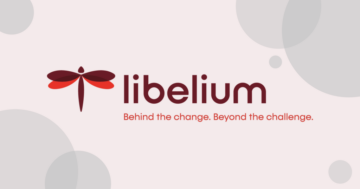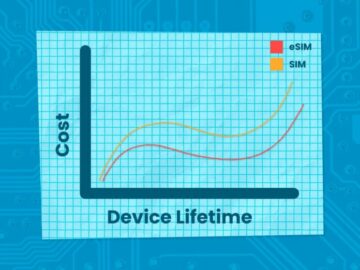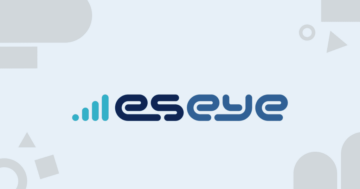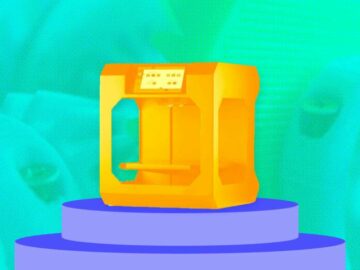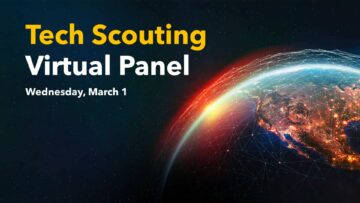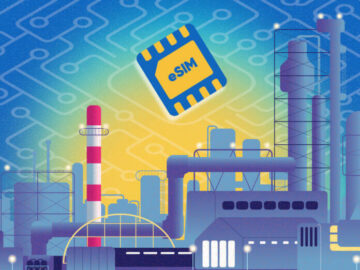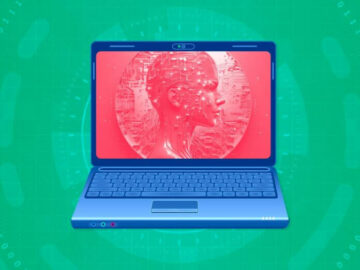
This week, EnOcean CEO Raoul Wijgergangs shares the future of commercial and office spaces and some of the technology, namely Smart Spaces, driving it to fruition. Smart Spaces utilize IoT and digital twin technology to gather insights and data in order to improve building efficiency and improve the wellbeing of the people inside. Raoul shares some of the most compelling use cases for Smart Space technology, across commercial, enterprise and even some residential industries.
Roaul also shares some advice for companies looking to utilize Smart Spaces for their own businesses. He speaks to considerations companies should keep in mind when determining how their spaces could best benefit from this technology, as well as his advice when setting goals to determine exactly what you’re trying to achieve through digital transformation.
Raoul Wijgergangs was appointed CEO of EnOcean in August 2021. The Dutch IoT expert has over 20 years of experience in the IoT industry, having led two successful exits through acquisition as well as one by a joint venture. Before joining EnOcean, he was CEO at Disruptive Technologies in Oslo and worked as Vice President/General Manager at Silicon Labs as well as Vice President/General Manager of the Z-Wave business unit at Sigma Designs in Copenhagen, to name but a few positions. He is also a co-founder of the Z- Wave Alliance
Interested in connecting with Raoul? Reach out to him on Linkedin!
About EnOcean:
EnOcean GmbH is the pioneer of energy harvesting. Headquartered in Oberhaching, near Munich, with its subsidiary in Salt Lake City, UT, the company delivers valuable data for the Internet of Things (IoT) with its
resource-saving technology. For 20 years, EnOcean has produced maintenance-free wireless switches and sensors, which gain their energy from the surrounding – from movement, light or temperature. The combination of miniaturized energy converters, ultra-low power electronics and robust radio technology based on open standards (EnOcean, Zigbee and Bluetooth®) forms the foundation for digitized buildings, services and production processes in the IoT. The self-powered solutions are used in building automation, smart homes, LED lighting control and industrial applications. As an innovation driver, EnOcean is a strong partner for more than 350 leading product manufacturers and has already succeeded more than a million buildings worldwide with energy harvesting solutions.
Key Questions and Topics from this Episode:
(01:18) Intro to Raoul
(02:22) What is the Z-Wave Alliance?
(03:31) Intro to EnOcean
(05:31) Can you share some use cases?
(08:56) What are Smart Spaces? Why are they important?
(11:56) How are sensors and the Internet helping to reduce building emissions?
(14:45) How can commercial building owners benefit from Smart Spaces?
(16:19) How do you advise companies to get started in the adoption of Smart Space technologies?
(17:48) How have you seen the space grow? How much of that growth do you attribute to the pandemic?
(19:25) What are the biggest challenges to the growth of adoption?
(22:09) How do you see partnerships contributing to the growth of the Smart Spaces space?
(25:15) How can our audience learn more about EnOcean?
Transcript:
– [Announcer] You are listening to the IoT For All Media Network.
– [Ryan] Hello everyone, and welcome to another episode of the IoT For All podcast. I’m your host, Ryan Chacon, and today’s guest is Raoul Wijgergangs, the CEO of EnOcean, a company focused on energy harvesting technologies and applications. He has over 20 years of experience in the IoT space with multiple successful exits and is the Co-Founder of the Z-Wave Alliance, which we’ll cover a little bit in our discussion. But on top of that, we’re gonna spend a lot of our time focusing on smart spaces, what they are, how companies can benefit from having smart spaces, how building managers can benefit from having smart spaces within their buildings, and advice for companies looking to kind of start down that smart spaces journey about the different technologies and how to really get started. But before we do that, if any of you out there are looking to enter the fast growing and profitable IoT market, but don’t know where to start, check out our sponsor, Leverege, Leverege is IoT solutions development platform, provides everything you need to create turnkey IoT products that you can white label and resell under your own brand. To learn more, go to iotchangeseverything.com, that’s iotchangeseverything.com. And without further ado, please enjoy this episode of the IoT For All Podcast. Welcome Raoul to the IoT For All Podcast, thanks for being here this week.
– [Raoul] Thank you so much for having me.
– [Ryan] Yeah, it’s fantastic to have you here. I wanted to start this off, if you could just give us a quick introduction to yourself, background experience, you know anything you think our audience would find relevant to learn a little bit more about who they’re listening to.
– [Raoul] Okay. Yeah, my name is Raoul Wijgergangs, I’m the CEO of EnOcean. I’ve been in the IoT industry for the last, I would say, well over 20 years. Been around both in the corporate side at Phillips Electronics for Bluetooth and Wi-Fi, but my biggest chunk of these last 20 years, I’ve spent building up at the fantastic Z-Wave IoT business. Spend my time there for on the smart home sites, two, three years ago, I started to also venture into more the commercial side of IoT and industrial sides of IoT, that is a space that is still a little bit younger than the Smart Home side of it, and there’s more new businesses that can be created, which I think is exciting.
– [Ryan] Fantastic, and you’re also the Co-Founder of the Z-Wave Alliance, correct?
– [Raoul] That’s right, yep.
– [Ryan] Tell me a little bit more about that, I’ve heard of it and been in talks with individuals from the Alliance before, but I’d just love if you’d give a quick overview of what that is.
– [Raoul] Yeah, so the Z-Wave Alliance is the body where through which a lot of the Z-Wave partners collaborate. If you look at IoT markets at large, many of them, almost all of them, probably I would venture to think are ecosystem-based type of go to markets. Various companies with various different channels collaborating together to create experiences for the end users in the end, and doing that properly and doing that in a orchestrated fashion, that’s where the Z-Alliance play a big role. So already in 2005, we created the Z-Wave Alliance and EnOcean has done something very similar one or two years later by creating the EnOcean Alliance.
– [Ryan] Fantastic, well, tell me a little bit more about EnOcean, what are you all doing, kind of the role you all play in IoT and that kind of thing?
– [Raoul] Yeah. So EnOcean is a company that operates, I would say for 90% in the commercial science of IoT, so IoT devices and solutions that go into offices enterprises, a little bit into industrial solution and a little bit into smart home, but not too much. And where it sets itself apart really is they have always been creating IoT solutions that are driven by energy harvesting based power. So it’s energy harvesting is a term that is used for creating IoT devices that are in principle wireless and battery-less, they harvest the energy around the devices itself. That is rather unique, which is super critical for these commercial environments that we play in, because you know in a home, if a sensor runs out of a battery, people don’t mind to replace a battery here and there, but if you deploy sensors in an enterprise, you do that at scale. And you’re gonna have to staff up your IT department just to replace batteries if they were battery operated devices. So that is an absolute, no go, and for that particular reason, energy harvesting is a fantastic solution there.
– [Ryan] Yeah, I totally agree. I just had a guest on a recent episode, we were talking about energy harvesting and just the overall sustainability side of IoT and kind of where we are now and kind of the future with battery less devices, kind of what that leads to potentially from a benefit standpoint with not just the environment, but also with different use cases and results, so that’s fantastic. Talk a little bit about some individual use cases or kind of applications of your also offering technology that you have going on that you’re excited about that maybe a good way to kind of bring this full circle for our audience.
– [Raoul] So EnOcean started it’s business, mostly in the building automation. So the devices that help you in an office environment, to control your lights, but also to control your heating and your shades, but it wraps around typically devices that sit into walls or in windows, or in doors, et cetera. A big volume element there is a energy harvested bed light switches. So you can put them anywhere, they’re not wired up to your lights in any way, shape or form. You can put them on your wall, but you can also put them on your desk or wherever makes sense for you, and the energy of your finger, pressing the button is enough to create a communication from the light switch to the actual lights, to turn them on or off or high or low, et cetera, et cetera. That’s an example in the building automation space that we do quite a bit of business with. If you look at our other business that is developing like wildfire right now, that is not so much the business of the real estate owners anymore for building automation, but it is the smart spaces segment where the smart spaces segment varies from building automation, is that it isn’t related to the structure of your building any longer, but it is basically the tenant awfully building that wants to deploy for the health of their employees or for getting people safely back into an office after COVID or for the sake of sustainability, they wanna deploy IoT sensors for the most, that measure facts about, is there a good ventilation system, is there a good amount of oxygen in the air, are certain desks being used or not used, so that when people come in, they know where their teammates are based or where, for example, where you have your preferences to be at 72 Fahrenheit, or you prefer to work at 75 Fahrenheit, so you’re grouped together according to your preferences, and as a company you’re not wasting energy because everybody has to be the same or equally warm or equally cold, or you get a lot of those discussions in larger corporations. And that’s where in smart spaces, we have a lot of those type of applications based on the sensors, and then the sensor they communicate on the existing infrastructure of the Wi-Fi access points. We have fantastic partnership with Aruba. These wifi access points are then used to carry that information from the sensors up to the cloud, through a piece of software that we have developed that partially resides in the Aruba access points. And then you don’t need to run any new infrastructure in order to deploy these, that piece of technology, and that’s a great interest to a lot of companies.
– [Ryan] Absolutely. So I wanted to talk a little bit more about the smart spaces topic in general. When people hear smart spaces, it could mean a whole number of things, but when you all talk about it, what is just the high level terms, smart spaces mean to you, and why is it so important that we’re focusing kind of on this area, in the IoT space from a solution standpoint?
– [Raoul] Yeah, so smart spaces are the tenants of buildings, that’s the way we are segmenting that. But if you look at that, who are those companies? It’s sport brands, it’s telcos, it is banks, it is insurance companies. Typically companies that have a good amount of people and a good amount of desks. And these companies have figured out that if they don’t have an agenda that addresses employee health and employee productivity, as well as sustainability, then in a few years, you will not be getting any new young college graduates joining your company, because they don’t wanna work for companies that don’t have a sustainability agenda, or that don’t have the interest of the employees health in mind. So every big company knows that, and they’re trying to find ways right now, of how can we assure that we do these things for our employees, and for the sake of our own company, and in the end, because of sustainability, obviously also doing something good for this earth. You shouldn’t forget that 40% of the carbon that is emitted every year comes from buildings, 40%. There’s quite something we can do jointly by not having a lot of empty desks sitting around, but managing that effectively, and you know CFO will love it too, because they can figure out certainly now pre or post-COVID or towards the end of COVID, I would say, people are gonna come back into an office maybe three to four days a week, but not five days a week anymore. So 20%, let’s say one day a week is 20%, 20 to 40% of the desks generally will not be used anymore. So if you still have them sitting around, you, one are renting space that you shouldn’t be renting, and when you have that space that you’re renting, that you shouldn’t be renting, you’re also consuming a lot of carbon that way, you’re heating it, you’re lighting it up, and that is just absolutely a no go any longer. And a lot of companies are seeking the technology that can help them address those issues and those opportunities, and that’s what we’re right smack in the middle of.
– [Ryan] So speaking about the building emissions, how are sensors and thus the internet as well, helping to kind of curb that problem from y’all protective?
– [Raoul] So let’s look at something in a usage model, like a desk occupancy. Like I said, people are coming in three to four days a week, working from home one to two days a week on average is what is what is expected. You will not have, you don’t need your own desk anymore, but you have your preference of either groups that you need to collaborate with, or your preference in terms of heating, or type of cooling settings. And when you come into the office, it will guide you to a desk that have either your colleagues that you need to work with, or your temperature settings that you’re there. And it is also known, and it manages that through a cloud, it’s also known that, listen, we can, as a company say, probably 20% of the real estate because of the hundred thousand employees, they won’t be there every day, and you can save yourself buildings or floors or something of that nature, not having to rent them, and certainly not heating or cooling them or lighting them up anymore. That’s what these desk sensors help a lot with. But also look at the health, I’m not sure if you were aware, but if you’re sitting in a meeting room that is intended for 10 persons, and you’re sitting there with 10 persons for about an hour, if the ventilation is poor, then the state of mind of those 10 individuals is the same as they would have had about two glasses of wine to drink.
– [Ryan] Wow.
– [Raoul] That’s how much they are affected by the lack of sufficient oxygen. And that’s also what these carbon dioxide detectors can simply measure, and then ventilation obviously it needs to kick in, in order to make sure people have have productive time together and a healthy time too.
– [Ryan] That’s super fascinating, I would never have expected that or really thought through in details, that’s crazy, that it’s two glasses of wine kind of equivalent for 10 people in that room if the ventilation is poor.
– [Raoul] Exactly people don’t know and realize that, and
– [Ryan] No, not at all.
– [Raoul] We all know that when we spend a lot of time with two glasses of wine in our body continuously or hourly, it’s not that good to do that day after day after day, but it’s the same, by the way with carbon dioxide, that you have an overdose off in these meeting rooms, it’s really not healthy for you. There’s now also books appearing that address that.
– [Ryan] That’s super fascinating, I didn’t expect the conversation to go that route, that’s super interesting. We’re talking about how companies can really benefit from this, but I also assume we can pull this out to more commercial building owners as well, to be able to offer this for smaller tenants in some capacity, and for shared meeting spaces and things like that, that’s probably applicable there as well, right?
– [Raoul] Yeah, absolutely. What we are finding is, it applies to every building, whether it’s large or small, it applies to smaller companies as it applies to big companies, obviously the bigger companies, they have perhaps more to gain quickly if they can do away with some of the real estate, the renting that they don’t really need. So they’re making it perhaps a more of a topic for them, or they have more capacity to also find the right solutions and address that, whereas very small entrepreneurial companies, they’re typically super, super busy and may not necessarily be thinking in this direction yet, because they’ve got a hundred other things going on. But absolutely, fundamentally, this doesn’t only apply to large corporations, it certainly applies across the whole suite of smaller to larger companies.
– [Ryan] So I’m sure there’s a lot of people out there that are listening to this and learning a ton just with things that they did not know about how poor ventilation affects people individually, the other benefits of smart spaces and so forth. How do you, when you work with companies, how do you kind of advise them to get started? Or if somebody is listening to this, what would be the best first steps for them to get started, going down this path to adopt these types of smart space technologies, whether it’s for their own building or it’s seeking out new space that has this already in, what should they be looking for, and what’s important to keep in mind?
– [Raoul] So I think, there’s a couple of things to keep in mind. First of all, they got to look at what are the primary goals and be conscious about it, is that really the sustainability angle or employee health, or of course, most of the time it is both, but have a clarity on what you’re trying to accomplish and then to contact either like one of our key partners Aruba, which a lot of companies already have the access points from, they can contact us, they can contact system integrators that have done IT installations for them in the past, and talk about their demands and say, listen, we’re seeking IoT solutions, and they must realize that, when you start entering down this path, how much maintenance can we take or do we wanna take, or we don’t want to take any maintenance, this must be pain-free and frictionless, right. And based on that, you can make your selections as to what sort of products you can work with.
– [Ryan] And have you seen the space and the smart spaces space grow over the last couple of years and how much of the growth of it has been contributed to going through a pandemic?
– [Raoul] So I would say smart spaces four years ago, as a market segment didn’t exist or barely existed, right? It was building automation that had everything to do with the structures, the walls, the windows, et cetera, but the tenants were not involved in any of that. It started to play a greater role pre-COVID, because of sustainability, and companies getting sustainability on their agenda and seeking solutions for that. That was the starting point, and we’ve seen a massive acceleration because of COVID, and particularly when COVID is now nearing its, I don’t think it will ever really stop, but we’re getting much more of a handle on it. And people wanna get back into the office, they want to be amongst colleagues in part, they need to be for offices and for buildings, they need to be back in action with each other, and now there is a big surge of demand because of this, with COVID we see a massive acceleration, and everybody that looks at this for the sake of COVID, they’re also going like, can we also reuse the same implementations and the same sensors and the same clouds for sustainability as well. And then you kill two birds with one stone.
– [Ryan] Yeah, I think we’ve seen across all different industries, the infrastructure that you put in place to deploy an IoT solution, the more you can use that to solve other problems within your organization or create better or improve efficiencies within your organization, the more likely it is to be adopted. But throughout that adoption process, I’m curious to learn a little bit more about what you’ve seen are the biggest challenges for adoption to grow, maybe it’s implementation side, maybe it’s the understanding and the educational components of understanding, what’s actually going into these things, what have you seen as the biggest kind of barriers and challenges with adoption and even the implementation of these types of solutions for smart spaces?
– [Raoul] You know, we as a company, but also we as an industry are scattered. We provide cloud software, we provide a sensor technology, there is a need for those two elements, but there’s also a need for somebody that installs this locally, system integrator typically. There’s a need for an application piece of software that does very specifically certain things that a company is looking for, a software company as well. So you can already hear, there’s three to four parties into the mix pretty quickly. And for a company that makes running shoes, for example, they’re not experts as to who they need and what they need, and they shouldn’t be experts. But today it is somewhat hard for these companies to find the go-to place, right? Where can I get this needs that I have fulfilled? And yes, if there’s three or four companies that need to collaborate in order to do that, fine, but where do I find these three or four companies, and how do I make sure they collaborate well, so that they’re not all pointing in each other’s way, like it was their fault or this is something they’re supposed to do. So removing that friction for the sake of, and for the benefit of the end customers is something that we as a company need to, and have it super high on our priority list of course, need to do a better job at, and as an industry, we need to organize ourselves, and Alliance is a part of the answer there in order to create a single face and a single go-to place for the end customers to go to and find these solutions and be able to speak with somebody, a single company that can organize it for them.
– [Ryan] So let me ask you, I mean I do agree that the fragmentation of IoT in general does lead to a lot of challenges for companies, and the Alliance angle is something that’s definitely unique. Where do you see not just alliances, but other partnerships in a sense, playing a role in the growth of the smart spaces space, and I guess I wanna tie that into also just learning where you think the space is going and where it can go in the next 18 to 24 months kind of thing.
– [Raoul] Yeah, I think, the companies that have done something like this for many years already are the Aruba’s of this world. Yes, they’ve installed wifi infrastructure, it speaks to your phone, it speaks to your computers, it speaks to your iPads. So is that completely different from a wifi access points that speaks to sensors and have special apps on your phone to navigate you to certain desks? There are certain parallels that we can draw to that industry, where these things have been sorted out, in part by technology platforms like app stores, in part by system integrators that have done fantastic jobs to put bundle solutions together, and I think companies that have played a role in this IT infrastructure, can redeploy themselves to do the same thing for IoT infrastructure.
– [Ryan] Absolutely.
– [Raoul] And there’s not a lot of them that is already doing this, but I think many of them are seeing this opportunity and they’re trying to find out ways of how they can play in this.
– [Ryan] Yeah, it’s a very interesting space because of a lot of things, the technology, maturity, and then also just seeing a situation in which a lot of us maybe never have expected or experienced before through the pandemic, of being a majority of people working in offices, in certain spaces, we then were forced to be remote, I mean, don’t get me wrong, there’s a lot of remote people before this, but then we were forced kind of as a whole to be remote, and now we are trying to figure out the best and safest way to come back into the office, cause it does definitely increases productivity in a lot of situations and a lot of businesses benefit from that. And the conversation we’re having here today is fascinating because not only am I, but I’m sure our audience is learning a ton about what actually is happening in these spaces and how the technologies that we now have available can help us be more efficient, be more productive as an organization, all the way down to the individual level. So this is super interesting, and I’d love it if you could just quickly share, if anybody out there is kind of wants to learn more, wants to follow up with any questions, just kind of get a better sense of how this may apply or how this could, or you all even, could help them in their journey towards this adoption, what’s the best way to look into that as well as reach out?
– [Raoul] Yeah, so I would recommend everybody to go to our website, enocean.com. I think it’s a great resource for finding usage models, testimonials from other customers that are doing this, that companies can learn from. But I think also enoceanalliance.org is another good place where you can see an ecosystem of companies that all build product that speak the same language, but also system integrators in there, software solution companies are in there, and those are two great resources generally, that I think a lot of companies will be helped by.
– [Ryan] Fantastic, anything we should be looking out for, coming out of the EnOcean side, or even the EnOcean Alliance side in the next number of months, just kind of pay attention to?
– [Raoul] We have some exciting and new things coming up, but there’s not something that I can really reveal at this point in time.
– [Ryan] No problem.
– [Raoul] Absolutely stay tuned.
– [Ryan] Okay, fantastic. Well, this has been a very great conversation, I’ve learned a ton just personally, like I said, I think our audience is gonna get a lot of value out of this as well, it’s very applicable to them with every business out there. So I really appreciate your time today and thanks for being on the show.
– [Raoul] Thanks for giving me the opportunity.
– [Ryan] Absolutely.
– [Raoul] All right, take care.
– [Ryan] Bye.
– [Raoul] Bye bye.
– [Ryan] All right everyone, thanks again for watching that episode of the IoT For All podcast. If you enjoyed the episode, please click the thumbs up button, subscribe to our channel, and be sure to hit the bell notification, so you get the latest episodes as soon as they become available. Other than that, thanks again for watching and we’ll see you next time.
Source: https://www.iotforall.com/podcasts/e151-smart-spaces
- 11
- 2021
- About
- Absolute
- access
- According
- acquisition
- across
- Action
- address
- Adoption
- advice
- All
- Alliance
- already
- app
- app stores
- Application
- applications
- apps
- AREA
- around
- audience
- AUGUST
- Automation
- available
- average
- Banks
- barriers
- Basically
- batteries
- battery
- being
- Bell
- BEST
- Biggest
- Bit
- bluetooth
- body
- Books
- brands
- build
- Building
- Bundle
- business
- businesses
- Capacity
- carbon
- carbon dioxide
- care
- cases
- Cause
- ceo
- cfo
- challenges
- channels
- Circle
- City
- Cloud
- Co-founder
- collaborate
- College
- combination
- coming
- commercial
- Communication
- Companies
- company
- computers
- content
- contributed
- Conversation
- Copenhagen
- Corporations
- could
- Couple
- Covid
- Creating
- critical
- Customers
- data
- day
- Demand
- Desks
- determining
- developing
- Development
- Devices
- DID
- different
- digital
- digital twin
- Doesn’t
- Drink
- driven
- driver
- driving
- Dutch
- ecosystem
- educational
- efficiency
- Electronics
- Emissions
- employees
- energy
- Enterprise
- Environment
- estate
- example
- experience
- Experiences
- experts
- Face
- Fashion
- FAST
- Figure
- fine
- First
- floors
- follow
- form
- Foundation
- full
- future
- General
- getting
- Giving
- glasses
- Goals
- going
- good
- great
- Grow
- Growing
- Growth
- Guest
- guide
- harvest
- Health
- help
- here
- High
- Home
- How
- How To
- HTTPS
- important
- individual
- industrial
- industries
- industry
- information
- Infrastructure
- Innovation
- insights
- insurance
- interest
- Internet
- internet of things
- involved
- iot
- iot devices
- issues
- IT
- Job
- Jobs
- joint venture
- journey
- Key
- Labs
- language
- large
- latest
- lead
- leading
- LEARN
- learned
- learning
- Led
- Level
- light
- List
- Listening
- locally
- looking
- love
- Majority
- Making
- Market
- Markets
- measure
- Media
- million
- mind
- model
- months
- more
- Munich
- namely
- Near
- network
- notification
- offer
- offering
- Okay
- open
- opportunities
- Opportunity
- order
- organization
- Oslo
- Other
- overdose
- owners
- Oxygen
- pandemic
- partner
- partners
- Partnership
- partnerships
- Pay
- People
- perhaps
- platform
- Platforms
- Play
- podcast
- poor
- power
- pretty
- Problem
- process
- Produced
- Product
- Production
- productivity
- Products
- profitable
- Protective
- provide
- provides
- Radio
- real estate
- reduce
- Rent
- replace
- resource
- Resources
- Results
- Rooms
- Route
- Run
- running
- Scale
- Science
- seeking
- sense
- sensors
- Services
- setting
- Share
- shared
- Shares
- similar
- Sites
- small
- smart
- Smart home
- So
- Software
- software solution
- Solutions
- SOLVE
- something
- Space
- Speaks
- specifically
- spend
- sponsor
- Sport
- standards
- start
- started
- State
- stay
- STONE
- stores
- subsidiary
- successful
- surge
- Sustainability
- Switch
- system
- Talk
- talking
- Talks
- Technologies
- Technology
- Telcos?”
- The Future
- Thinking
- thought
- Through
- TIE
- time
- today
- together
- Ton
- top
- Topics
- us
- users
- value
- venture
- volume
- Wave
- Website
- week
- What
- What is
- white label
- WHO
- Wi-fi
- wifi
- windows
- WINE
- wireless
- within
- without
- Work
- worked
- working
- working from home
- world
- worldwide
- would
- year
- years
- youtube

